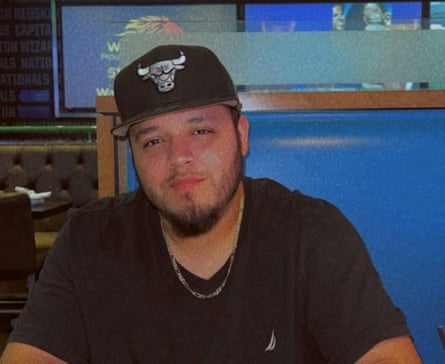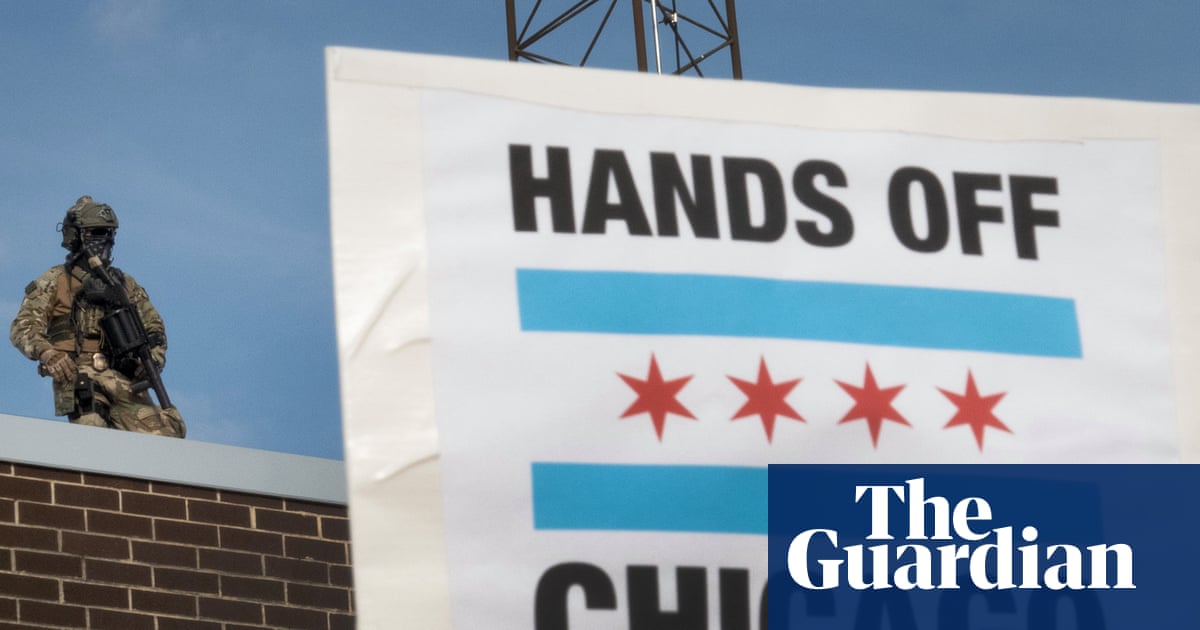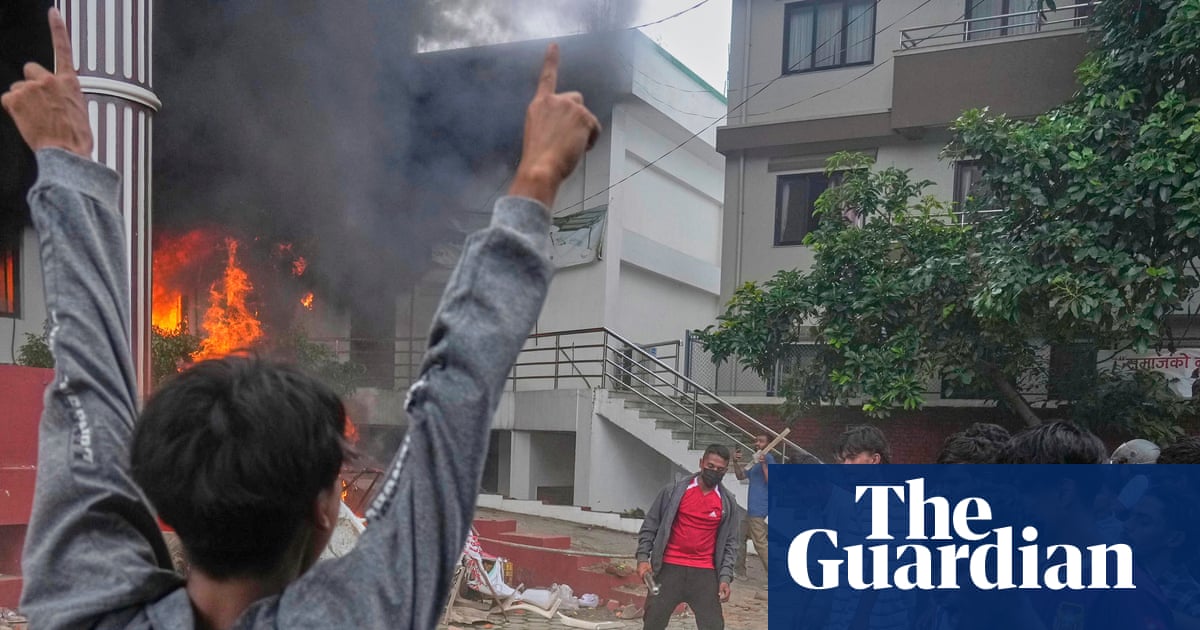“Know Your Rights” posters, with critical information for interactions with Immigration and Customs Enforcement (Ice) officers, are all over the city of Chicago. Plastered across subways or advertised along local bus routes, the Know Your Rights campaign is a coordinated effort on the part of city officials and local immigration advocacy groups to alert individuals of their rights during interactions with Ice. The posters are evidence of Chicago’s activism, long history of protecting its rich immigrant communities and resistance to attempts by previous administrations to weaken their protections. But now, as Donald Trump continues to roll out unprecedented attacks on immigrants – notably increased detentions and deportations without due process – organizers are stretched thin and scrambling to expand traditional tools used in the fight for immigrant rights to accommodate ballooning needs.
“I’ve been around since the beginning [in 2012], when we pivoted into doing multi-generational, anti-deportation work,” said Antonio Gutierrez, a co-founder of the immigrant advocacy group Organized Communities Against Deportations (OCAD). “We have never felt as stressed out or at capacity, even during the first Trump administration.”
Since he took office in January, the president has worked to fulfill campaign pledges to carry out mass deportations after promising to remove “millions and millions of criminal aliens”. The latest figures show sharp increases in detentions and deportations after Trump expressed anger at plateauing levels earlier this year. On 3 June, Ice officers arrested more than 2,200 people, a record high. As of 23 May, nearly 49,000 people are in Ice detention, NBC News reported. In April, more than 17,200 people were deported, a 24% increase compared with last year. These figures represent the first time in Trump’s tenure that deportations have outpaced those during the Biden administration.
The Trump administration has also rolled out unprecedented attacks on immigrant rights. More than 200 people have been removed from the US and transported to El Salvador’s notorious Terrorism Confinement Center (Cecot), many without any form of due process. Kilmar Ábrego García, 29, was removed from the US on 15 March and has yet to be returned despite the supreme court ordering that the US “facilitate” his return and the Trump administration admitting that he was removed due to an “administrative error”.

“Our perspective is that there is no law and order,” said Gutierrez of OCAD’s view on the state of US immigration. They added: “We continue to see that this current administration is going unchecked by many different things.”
Compared to other cities, Chicago is better situated than most to navigate Trump’s assault on immigration – a fact that Trump officials have pointed out. Following Trump’s election win in November, his so-called “border czar”, Tom Homan, announced that mass deportations would begin in Chicago. Homan warned Chicago’s mayor, Brandon Johnson, and other Democratic officials to “get the hell out of the way”. But in January, Homan complained that Chicago was “very well educated” in its ability to resist Ice agents. Johnson defended Chicago’s protections for undocumented immigrants before a Republican-majority Congress.
Chicago organizers have implemented a swath of strategies to resist efforts from Ice, responses rooted in collaboration between organizations that have been in place dating back to the first Trump administration. OCAD holds regular community meetings with its clients to educate on the near-daily changes in Trump’s anti-immigration tactics, with meetings now occurring bimonthly. OCAD and other collaborators also oversee rapid-response groups that monitor Ice activity.
As demand for services increases, volunteer interest has also surged, another tenet of Chicago’s activism culture. Volunteer interest in anti-deportation efforts has increased by 300% since 2024, Gutierrez noted: there are now more than 400 volunteers working in 27 neighborhood response groups. But there’s still “definitely a strong sense of fear” among immigrants in Chicago as Trump threatens to ramp up deportations, said Gutierrez. OCAD’s hotline, which handles calls for Ice sightings and other immigrant-related questions, has seen an increase from five calls a month last year to more than 100 each day in the weeks following Trump’s inauguration. Now, the hotline averages about 50 calls per week. Beyond deportation, immigrants across ethnicities have expressed concern about Trump’s attacks on green card holders, birthright citizenship or overall delays in visas, several advocacy groups said.
Even with its robust organization efforts, Chicago immigrant advocacy groups have still faced considerable challenges. Conservative city council members attempted to change Chicago’s sanctuary city status in January, allowing police to collaborate with Ice in certain circumstances; Illinois Republican state legislators have tried to implement similar laws. Such attempts have failed.
Chicago has remained “pro-immigrant for decades”, said Gutierrez, a stance that is evident through the city’s extensive policies protecting immigrants of all statuses and its resistance to conservative attempts to roll back progress. Back in 1985, then mayor Harold Washington signed an executive order making Chicago a sanctuary city, and neighborhoods such as Uptown, Albany Park and Little Village served as hubs for arriving immigrants of all backgrounds. Social services providers such as World Relief and Refuge One set up offices in those communities, collaborating with local landlords to secure housing for refugees.

Immigrant advocates have worked for decades to limit the power of Ice in Chicago communities. In 2012, Chicago’s city council passed the Welcoming City ordinance, which restricts city agencies from providing information on undocumented immigrants to Ice or inquiring about an individual’s immigration status. Ice is also not allowed in Chicago public schools and school officials are not allowed to share student information, as written in the 2019 Chicago Teachers Union contract. These safeguards were reaffirmed in CTU’s latest contract, which passed in April.
At the state level, officials have passed laws to protect immigrant rights, said Brandon Lee, communications director at the Illinois Coalition for Immigrant and Refugee Rights. Members of the ICIRR have previously lobbied the Illinois state legislature to enact the Trust Act, a 2017 bill which prohibits local Illinois law enforcement from carrying out immigration enforcement.
Getting the Trust Act passed and subsequent additions to the law was a “years-long campaign” with a coalition of organizations, said Grace Pai, executive director of Asian Americans Advancing Justice – Chicago. “There were a lot of pieces of follow-up legislation to add on additional protections that weren’t passed in that first piece of legislation, but that’s legislation that we’re obviously really proud to have,” she said. Such laws have limited the ability for Ice to gain access to sensitive information from police collaboration, a critical tool for resistance as the Trump administration attempts to use police for immigrant detention efforts.
That strategic organizing is only possible due to a statewide network of organizations that has existed for decades, said Lee. Every year, the ICIRR organizes advocacy days during the legislative session during which member organizations and their constituents lobby Illinois lawmakers.
Educating constituents has remained critical for immigrant groups. A coalition of groups share resources, including translations of educational material, said Grace Chan McKibben, executive director of the Coalition for a Better Chinese American Community (CBCAC). Beyond the citywide Know Your Rights campaign, groups are often working to combat misinformation through sessions and information blasts, said McKibben, or working with non-immigration groups to make sure immigrants sign up for benefits they are eligible for, such as food assistance and healthcare services.
On the policy side, groups still collaborate to lobby representatives to support pro-immigrant initiatives. Every May on Asian American Action Day, the CBCAC, Asian Americans Advancing Justice and other Chicago groups travel to Springfield, Illinois’s capital, to advocate for laws including funding for immigrant-specific programming. More than 500 people joined the lobbying efforts this year, an increase from the 300 to 400 people who have attended in previous years.
The ability for Chicago organizers to respond to Trump’s anti-immigration rollout comes down to “building relationships so that there’s trust and care for each other”, said McKibben. “That’s what’s remarkable about the Chicago model of organizing. [It’s about] how connected the organizations are. It takes coordination, communication and a common commitment to what is good for the group.”
Still, the fight to protect immigrant rights continues, especially as Ice arrests people at record levels. Just Wednesday, Ice agents in Chicago detained at least 10 people at a routine check-in for a monitoring program, including an OCAD member.
Chicago police department officers were also onsite, generating concern about the possibility of potential collaboration between the two agencies. ICIRR has asked the Illinois attorney general to investigate whether or not there were violations of the state’s Trust Act.
“Yesterday was an escalation on the part of Ice, all in the name of meeting the cruelty quotas set by Trump and Stephen Miller,” said Lee. “Everyday neighbors from across Chicagoland were apprehended, lured into a trap. This tactic Ice deployed … is now forcing families into impossible situations with no good outcomes and incredible risk.”
As Chicago organizations continue to fight against Trump’s immigration crackdown, activists are encouraging other cities to create their own networks of advocacy. Due process, judicial accountability and other rights are being eroded, but the strength of solidarity is not.

 3 months ago
45
3 months ago
45

















































